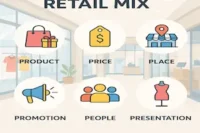What Is Beat Planning? Importance & Proven Tips to Create
Published: 02 Jun 2025
In today’s retail industry, proper time management and sales area coverage are critical to a business’s success. And that’s where a beat plan, also known as a permanent journey plan (PJP), comes into play.
Simply put, a beat plan is a day schedule/day plan that tells field salespeople which store to visit today, when, and how often to visit.
This structured data ensures that a salesperson covers the maximum number of stores, uses their time wisely, and, most importantly, builds better customer relationships and boosts sales.
That’s said!
But guys, do you know—making an effective beat plan is not an easy-peasy task. It requires a clear strategy, and smart tools to get it right. Even a single small mistake can lead to missed visits, wasted time, or poor store coverage
But, worry not today, In this guide, we’ll break it all down for you—step by step. From understanding beat planning basics to building one that works for you in real time.
So my champs, what are you waiting for? Let’s dive into the deep guide without wasting time.
What Is Beat Planning?
As I previously shared, beat planning is a day route plan that guides field salespeople on which store to visit, at what time, and how frequently. It’s like a smart schedule that helps them cover the right stores at the right time so that they can maximize sales and achieve their targets.
But guys, a beat plan just not only helps us save our time, but it also brings structure to a salesperson’s day. It ensures sales reps regularly visit the key outlets and improve relationships with store owners.
With a thoughtfully designed beat plan, sales agents can avoid random or repeated visits, which ultimately reduces travel distance and allows them to strategically focus on meaningful customer interactions.
So, in short, a good beat plan is the backbone of effective field sales. It helps sales reps stay organized, be more productive, and create lasting connections that drive long-term business growth.
Why Is Good Beat Planning Important?

There are plenty of reasons why making a beat plan is highly important for a business. For example
- It helps salespeople cover all key stores regularly without missing any important visits.
- Saves time by planning the most efficient routes and reducing unnecessary travel
- Improves customer relationships by ensuring consistent and timely visits
- Increases sales opportunities by focusing on high-priority stores and products
- Allows better tracking and reporting of sales activities and store performance
- Helps managers monitor the progress of their field team and make informed decisions
- Reduces costs by optimizing travel and minimizing wasted effort.
- Lastly, it keeps the sales team motivated with a clear daily plan
How to Make an Effective Beat Plan?
Creating an effective beat plan is crucial for brands looking to maximize their overall revenue. It helps sales teams stay focused every moment, cover the right outlets, and build stronger relationships with retailers, which ultimately gives a lot of benefits to brand owners.
Here’s a step-by-step guide on how to create an effective beat plan that actually works.
- Define Your Goals: The first step is always to clearly define your Goals, whether you want to grow sales of an existing old brand or launch a new product in the market. Your clear goals will guide you on what to do next and will also help you measure your success rate.
- Segment Your Market: Not all stores require the same level of attention. Group your target stores based on criteria like sales volume, location, or store type. This helps you focus your efforts where they’ll matter most and avoid wasting time on low-priority outlets.
- Map Your Outlets: Gather accurate and complete data about each outlet, like the store name, owner’s contact, location, and category. Use this to create a detailed map of your coverage area.
- Create a Visit Schedule: Decide how often each outlet should be visited. Important or high-potential stores may need weekly or daily visits, while others can be covered less frequently.
- Optimize Travel Routes: Plan routes that save time and fuel. Group nearby stores together and avoid long detours or backtracking. Digital tools like Onfleet, Circuit for teams, and Optimoroute Inc. can help make this easier and more accurate.
- Equip Your Sales Team: Give your sales reps the tools and information they need—like a digital beat plan, product brochures, pricing info, and training on how to follow the plan effectively.
Monitor and Improve: Once the beat plan is live, track its performance. Look at visit completion rates, sales numbers, and field feedback. If the results are not the same you are looking for, re-create the beat plan by considering the previous data. This will 100% work and maximize the sales of your brand.
Manual vs. Digital Beat Plan
When it comes to beat planning, businesses have two options—manual or digital. However, the primary purpose of both plans is the same, but they differ greatly in how they work and what they offer.
So let’s come and understand each beat plan one by one.
Manual Beat Plan
Manual beat plan is the traditional type of beat plan which is usually written on papers and diary’s. Field sales reps often rely on printed sheets or handwritten notes to remember which stores to visit and when.
While this method may seem simple, it comes with many challenges. It’s hard to update, easy to lose and lacks real-time tracking. Sales managers have limited visibility over the team’s daily activities, and collecting performance data becomes time-consuming.
So this may also lead to missed visits, repeated stops, and overall inefficiency in daily operations.
Digital Beat Plan
As the name suggests, it’s a digital beat plan that is usually written and managed using software or mobile apps. Instead of using paper or diaries, sales teams follow their daily schedules through digital devices like smartphones or tablets.
These tools offer some of the key features like automatic route mapping, real-time updates, visit reminders, and even performance tracking.
With a digital beat plan, managers can easily assign routes, monitor store visits, and get instant reports from the field. Sales reps also benefit by staying more organized and saving time on manual paperwork.
It not only improves accuracy and efficiency but also allows the team to adapt quickly to changes—making it the ideal choice for today’s fast-moving market.
Common challenges and how to avoid them?
However, a proper beat plan is always beneficial for sales reps to maximize the sales revenue of a brand. But if there is something wrong, the same beat plan can cause significant challenges.
Here’s what challenges a beat plan can cause and how to avoid them.
Inaccurate Addresses
If the addresses of different destinations are not accurately written or are incompletely written, sales reps may waste their valuable time finding the right location or may even miss important visits.
This not only affects productivity but also hurts customer relationships. So to avoid this, beat plan creators should double-check the outlet information before adding it to the plan. They can also use verified data from their CRM (Customer Relationship Management) or GPS tools to ensure every location is correct and easy to find.
Rising Overhead Costs
Ineffective Beat Planning
When beat plans are created without clear goals, proper segmentation, or real-time data, they often fail to deliver results. Sales reps may end up visiting low-priority stores more often while neglecting key outlets. This leads to missed opportunities, poor sales coverage, and reduced overall performance.
To avoid this, always build your best plan based on solid data and defined business goals. Prioritize outlets by category, sales potential, or market importance. Regularly review and update the plan based on field feedback and results.
Rising Overhead Costs
Without route optimization, sales reps may travel longer distances than necessary. This increases fuel costs, time spent on the road, and overall daily expenses. Over time, these small inefficiencies can become major cost burdens.
To prevent this, use digital tools that help in mapping the most efficient routes. Group nearby stores together and plan routes that reduce backtracking. This not only lowers costs but also gives reps more time to focus on selling.
Hey my champs
So today we’ve deeply understood what a beat plan is in business. It’s more than just a daily schedule—it’s the backbone of how field sales teams manage their time, cover their areas, and build strong customer relationships.
In the fast-moving consumer goods (FMCG) industry, timing and reach are everything. Studies show that companies with well-planned and executed beat routes can increase their outlet coverage by up to 25% and reduce travel time by nearly 15–20%. That means more store visits, more face time with retailers, and ultimately, more sales.
So, whether you’re just starting to build your beat plan or looking to improve it, remember this: a clear, consistent, and optimized beat plan can turn everyday visits into long-term growth.
Thank you!!

- Be Respectful
- Stay Relevant
- Stay Positive
- True Feedback
- Encourage Discussion
- Avoid Spamming
- No Fake News
- Don't Copy-Paste
- No Personal Attacks



- Be Respectful
- Stay Relevant
- Stay Positive
- True Feedback
- Encourage Discussion
- Avoid Spamming
- No Fake News
- Don't Copy-Paste
- No Personal Attacks





